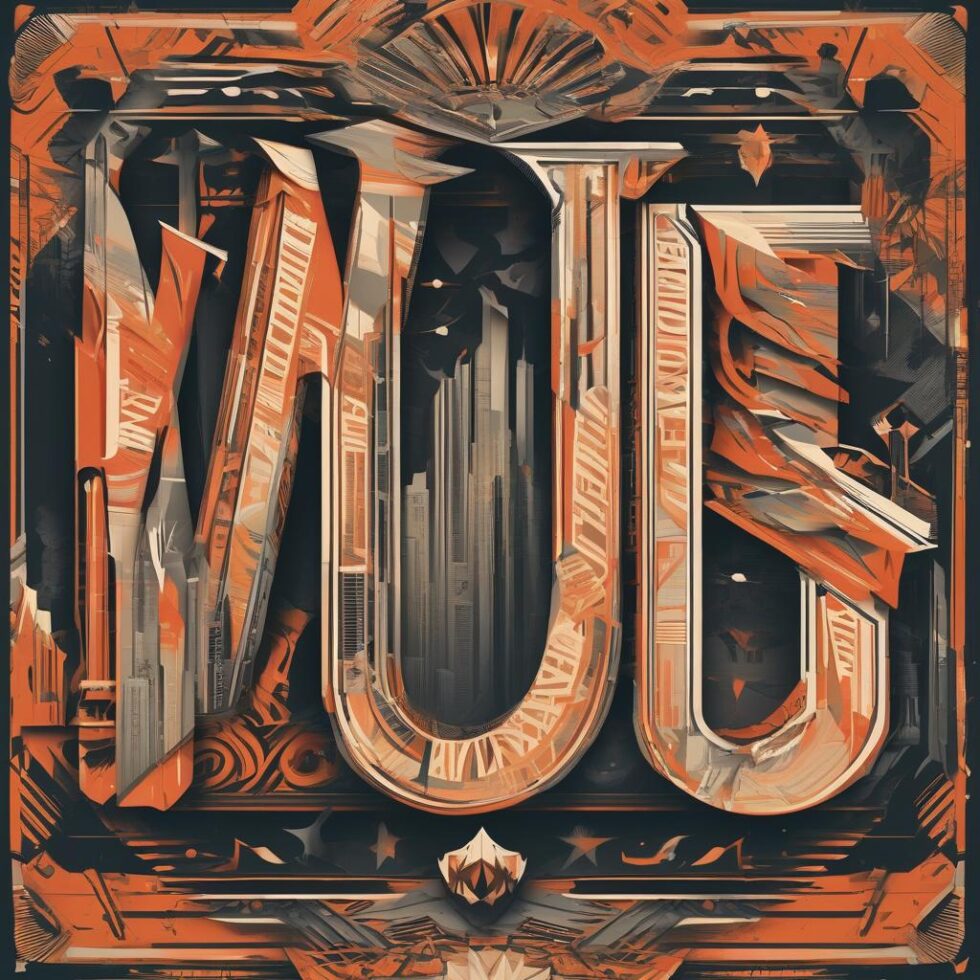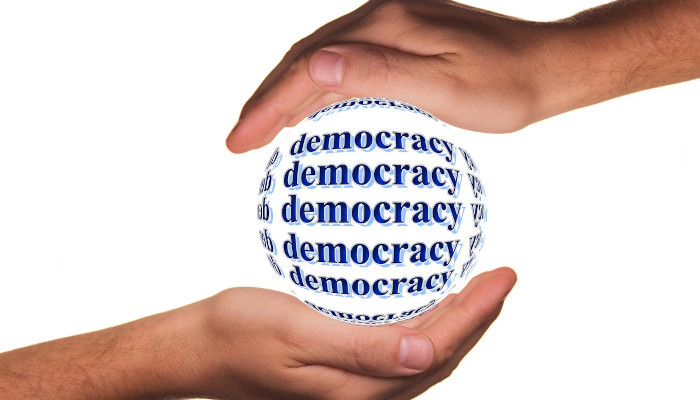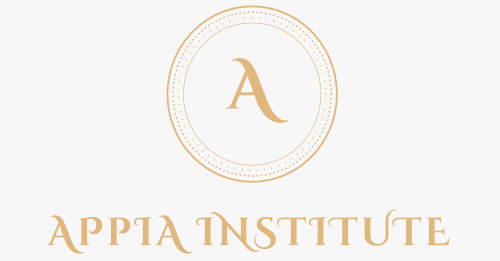
There are two Wests: one is dead, though pretending to be alive, and the other is thriving, though pretending to have troubles. They are different and must not be confused, lest great mistakes be made.
For centuries, the West has struggled with the recurring idea of its own decline and looming disaster. While other nations refrain from discussing their decline or possible fall as if it were a taboo, as if mentioning it would hasten it, Western countries have long wallowed in this narrative. And yet here they are—stronger than ever and far from declining.
US President Donald Trump, with his “Make America Great Again” (MAGA) slogan, is the latest incarnation of this idea. America, the paragon of the West, is faltering, yet it must rise again, say the slogans.
It is not merely a shared human obsession, a fear of the end or death. Perhaps there is a genuine historical element rooted in a confusion between two “Wests”: one Mediterranean and grounded in an old imperial order (West 1), and the other global, born with the discovery of America (West 2). These are interconnected but also widely separated. The definitive end of the first—post-World War I—paved the way for the second to fully bloom.
The comprehensive narrative of the first West’s crisis—its fall—relates to the collapse of the Austro-Hungarian Empire and the end of World War I, with its horrors—a vast, senseless bloodbath. At that moment, not one but three key pillars of the Western order crumbled. The Austro-Hungarian Empire, the Holy Roman Empire—mainstay of Europe for over a thousand years—the Russian Empire, the Third Rome, heir to Constantinople; and finally the Ottoman Empire, with its capital in the old Constantinople, now Istanbul.
Three Roman Empires, Three Religions
All three were legacies of the Roman Empire, relying on a close relationship between religious and imperial authority—the German Emperor had a dialectical relationship with the Pope; the Czar had the Patriarch at his beck and call; and the Caliph was both spiritual leader and supreme civil authority.
At that time, Oswald Spengler, a Bavarian thinker, crystallized the idea of the West’s crisis in his 1922 book. The West, centered around the Mediterranean, was indeed finished, and it would never return—and that is right.
Simultaneously, in the same region, thinkers like Hayek, Schumpeter, and Weber, faced with the explosion of socialist internationalist uprisings (close to Moscow) and nationalist movements (like those in Rome and Berlin), patiently explained that something new had been born from the ashes: the unparalleled value of the free market.
Over the last three to four centuries, there has been an explosion of the market economy— a product of Western thought and experience, shaped by influences from China and the history of global exploration. This idea evolved slowly, in opposition to the old empires, such as the Habsburgs, blessed by the Pope.
The Protestant Reformation of the 16th century paved the way for the transformation, followed by the French Revolution in the 18th, and ultimately the end of World War I in 1918. Through these stages, capitalism and Western ideas became globally dominant. Even the Soviet Union is a product of Western thought—Marx was born in Germany and spent most of his life in London, the very heart of the capitalist West. Kemal Atatürk in Turkey radically rejected the Ottoman heritage, including its religion and script.
That world is gone; it is not merely declining but buried—despite temptations in Russia, Turkey, or even within Europe—to revive it.
At the same time, a century after WWI, there is no crisis of capitalism or its worldview. There is no crisis in the West 2. Perhaps there is a crisis of individual Western states, but not of the Western model itself—born from the capitalist revolution.
The idea of the market—phase after phase of the industrial revolution—has established itself, reaching now its latest frontier: artificial intelligence. Here, China is catching up, but the breakthrough came from Western America. It demonstrates the ongoing strength and validity of the Western experience. Radical opponents of free markets—those who rallied behind fascist or communist authoritarian regimes—have all been defeated over the past century.
Singular Problems
If the system works, that doesn’t mean every country adopting it has no troubles. Various nations face specific problems. The United States, for example, grapples with enormous budget and trade deficits, as well as a national debt—problems that are neither new nor unique.
Another example is China, which over nearly fifty years has adopted only parts of the Western experience, resulting in a skewed, lopsided situation today. While Chinese production is exceptional—the best in the world in terms of both cost and quality—there are issues with overproduction and deflation. The domestic market isn’t driving growth, and nobody really knows how to unlock it organically and without pain. These problems are increasingly weakening China. They can be resolved, perhaps, but they are tough to fix without systemic reforms.
What we have witnessed over the past few centuries is not the crisis of the Western capitalist model, but rather its remarkable resilience. It transcends the countries that adopted it. Over the last hundred years, while talk of crisis persisted, the West has shifted from Britain and France’s dominance to a period where the United States now appears unshaken—possibly even stronger.
This has clear consequences. Presently, the West is winning because the main challengers over the past few years have suffered significant setbacks. Russia is tearing itself apart over Ukraine, Iran has proven to be a paper tiger, Hamas has been dismantled, and Iranian allies in the region have been decapitated. The Assad regime in Syria has fallen.
The Western setbacks in Afghanistan and Iraq since 2005 have not led to a viable alternative or emerging rival, as during the Cold War. The threat of global radical Islamism has largely faded—shown to be a matter of domestic law and order rather than a strategic, existential threat.
Communication
Yet, within the West, the narrative seems to diverge. It often appears as if Russia is winning in Ukraine and Hamas is triumphing elsewhere. This may stem from a weakness—the inability to analyze and fully grasp reality—blinded by the sparks of the moment, reflected in social media’s distorted mirror. Instead of clarity, we get a nightmare gallery of mutual reflections where every image is warped and surreal.
It is vital to regain historical perspective to see the truth clearly. Social media helps access information more quickly, but it also floods us with deafening noise—mountains of clutter that obscure understanding.
These distorted reflections serve as tools of manipulation—part of a new psychological warfare. Iran, despite being defeated brutally in recent conflicts, claims victory. The same goes for Russia, which continually asserts it is winning, even though the front has not moved in three years—in fact, they have lost ground from their initial advances.
NATO remains stronger than ever: military spending in Europe has increased, and the United States has made a significant return to the continent.
China is a complex proposition. It’s the real challenge. Yet, it faces a different set of problems. Its main issue is the lack of full convertibility of its currency, the RMB. Initially, China aimed to convert the RMB by the year 2000. But the 1997–98 Asian financial crisis shifted this goal, and then the 2008 American financial crisis pushed it further back, with the idea of complete RMB convertibility indefinitely postponed.
Full convertibility of the RMB is crucial because it would mean China’s complete integration into the global economy. Beyond convertibility, the internal Chinese market must also open to foreign competition, which would create genuine positive domestic rivalry—something China has yet to implement fully.
Today, the overproduction crisis arises because hundreds, perhaps thousands, of companies should have gone bankrupt long ago—they have no market, neither domestically nor internationally. It’s unrealistic to think that the world, comprising the West, Europe, the United States, and Japan—approximately 900 million people—could sustain China, a market with 1.4 billion, solely through imports. That situation should be exactly the opposite, and if China had opened its markets over the past 25 years, importing more and enabling its companies to compete internationally without excessive state aid, it could be the new global economic—and perhaps political—power.
Instead, China remains a giant with feet of clay. It has debts with an unknown total amount, and it is unclear how they can be resolved; their long-term sustainability is also uncertain.
All these are significant questions that unsettle the world—and also China itself. If China had fully adopted Western reforms—embracing a liberal, democratic political system capable of responding flexibly to social and economic changes—it would be in very different conditions today, and the world would look very different too.
But since China has not embraced these reforms, both China and the rest of the world find themselves in a state of profound unease. That could be pushing everybody toward an aggressive military race—daring confrontations that bode poorly for its future and ours.
Why did China make such mistakes? There are surely many explanations, but possibly one gnoseological reason is that it confused the two Wests: the one that was killed in the WWI trenches and the one that thrived through somersaults and revolutions. The confusion was not originally Chinese, but peddled by confused Western preachers.
The Vatican and Western Religion
The end of the Mediterranean Empires also marked the end of their traditional connection to their respective religions. The Russian Orthodox were persecuted and then revived almost as if nothing had happened, as Russian President Vladimir Putin groomed his new czarist dreams.
In Turkey, Islam was cast aside for decades until President Recep Erdogan also tried to follow a similar pattern, casting himself as a modern sultan and reviving the role of Islam—though not to Putin’s degree. Neither Russian Orthodoxy nor Turkish Islam had lost their social and political footholds in their respective societies. Turkey and Russia modernized, but their religious traditions came back with a vengeance.
The Pope was different. In 1870, it lost its Pontiff Estate, which had guaranteed its independence for over a millennium, and its defender, the Holy Roman Emperor, was also abolished. Plus, the Holy See was for many decades under the triple siege of atheist communism, deist freemasonry (holding massive influence in capitalist countries), and militant Protestantism. Communism arrived in Russia, but not to the same extent in the Muslim world. Freemasonry and Protestantism never really penetrated Turkey or Russia.
The shock for Rome had been enormous, but slowly the Holy See assumed a different global role—one that neither Russian Orthodoxy nor Islam managed to achieve. It built bridges with all three previous mortal challenges. The Holy See modernized Catholicism in a way that the others did not, and yet it preserved a thread of continuity with the past that does not hinder modernity.
The Vatican experience should serve as a model for Islam and Russian Orthodoxy. The key is to be in sync with modernity, not in opposition to it. Certainly, the Pope beckoning to all religions is a beacon of innovation, though rooted in continuity. Here, China could learn something, too.
(This article was borne out of a discussion with Giuseppe Rippa, in Rome, whom I thank.)






